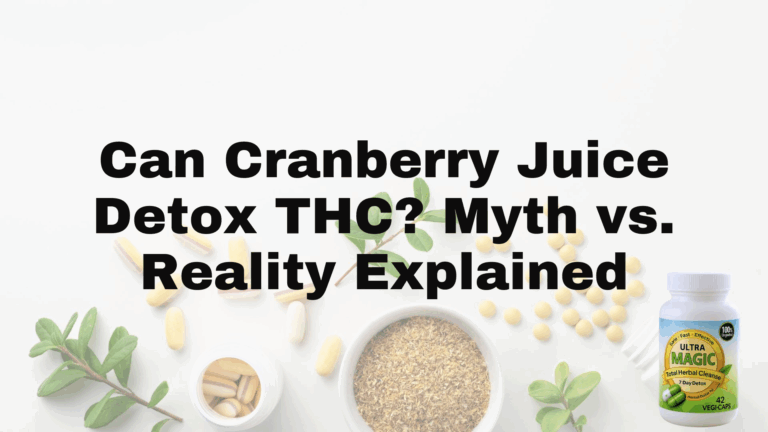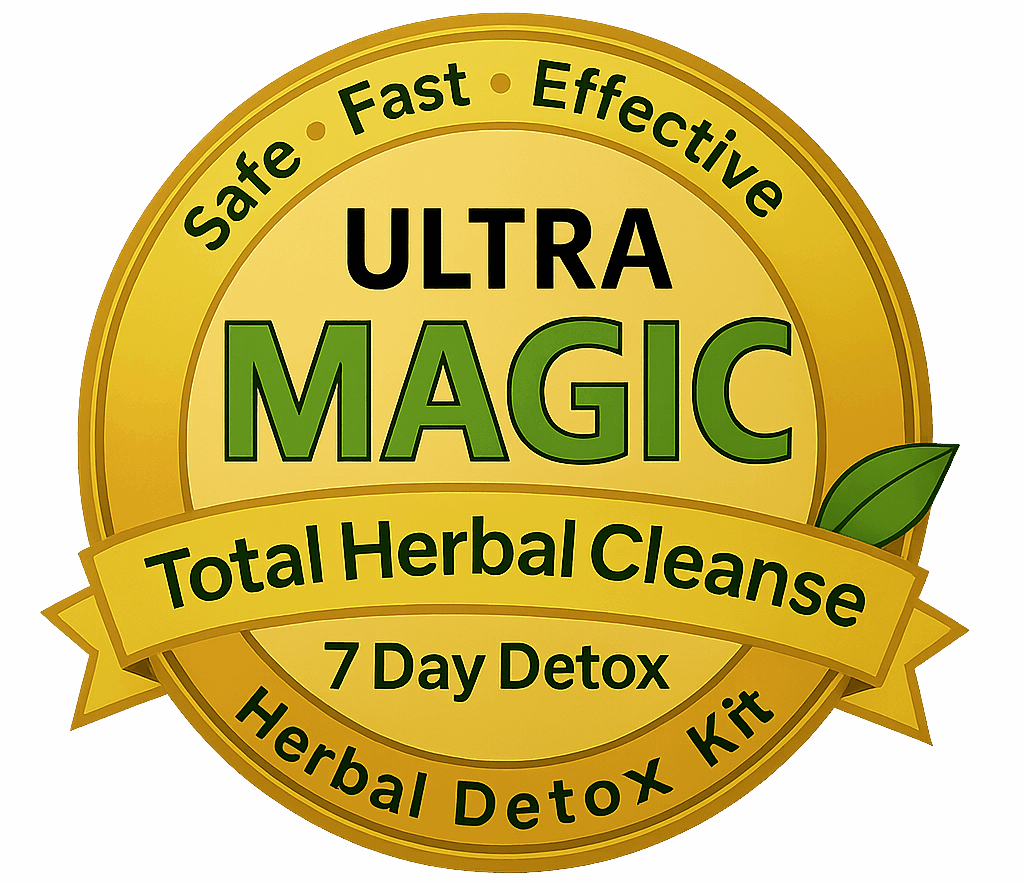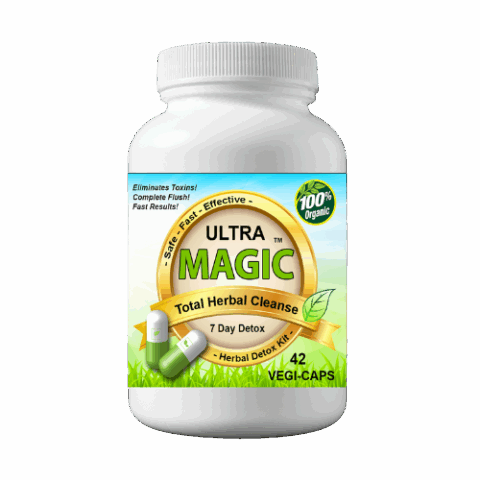
Can Cranberry Juice Detox THC? Myth vs. Reality Explained
Type “cranberry juice drug test” into Google and you’ll find a flood of tips promising a quick, natural loophole. The idea is simple: chug enough tart juice, pee a lot, and THC magically disappears. Science says otherwise. Cranberry’s mild diuretic kick may dilute urine, but it doesn’t pull stored cannabinoids from fat cells, and modern labs flag suspiciously watery samples.
For anyone facing an employment screen, probation check, or athletic test, betting on an internet myth can cost a job, fine, or season. Yet the cranberry cure keeps circulating because it feels doable, cheap, and healthy—three adjectives that attract desperate googlers hours before a cup is passed across the counter.
This article separates rumor from data. You’ll learn where the cranberry legend started, how THC actually moves through the body, what peer-reviewed research and toxicologists report, and why a gallon of juice is unlikely to beat a 15-nanogram threshold. We’ll also outline safer, evidence-backed options—from lifestyle tweaks to professional 7-day cleanses—so you can make an informed decision instead of a blind gamble. Your future may depend on getting this right.
How the Cranberry Juice THC Detox Myth Started
Before online forums and TikTok hacks, the “cranberry cleanse” floated around dorm rooms, barracks, and smoke circles as a handy secret: sip Ocean-Spray, pee clear, and you’re golden. The story stuck because it offered agency—no chemistry set required, just a grocery-store staple with a reputation for healthy kidneys. But how did a juice marketed for urinary-tract comfort become a go-to strategy for beating cannabis screening?
Folk remedies, Reddit threads, and word of mouth
The earliest searchable mentions pop up in 1990s Usenet groups, then explode on r/trees and r/drugtesthelp. One typical Reddit post: “My cousin slammed a gallon of cranberry the night before his probation test and passed—swear on it.” Such anecdotes gain traction because they are cheap, low risk, and hard to disprove; a passed test might be due to low personal THC levels, but credit goes to the juice. Yet across thousands of comments, there’s zero lab data—just up-votes and hearsay.
Diuretic and urinary-tract health benefits confused with detox
Cranberries contain proanthocyanidins that can inhibit E. coli adhesion in the bladder, which is why doctors sometimes recommend the drink for recurrent UTIs. It also works as a mild diuretic, increasing urine volume much like water or green tea. More pee, however, does not equal metabolite removal from fat cells. The confusion stems from conflating “flush out bacteria” with “flush out cannabinoids,” ignoring that THC-COOH is lipid-stored and released slowly into blood, not sitting idle in the bladder.
Pop-culture and product marketing influences
Detox beverage ads of the early 2000s often touted “cranberry extract” on flashy labels, lumping it with milk thistle and dandelion as nature’s cleaners. Music videos and stoner comedies referenced chugging cranberry before tests, cementing the trope in pop culture. Supplement sellers capitalized, pushing single-ingredient cranberry capsules as “drug test insurance.” The repetition across commercials, probation gossip, and social media forged a myth strong enough that many still Google “can cranberry juice detox THC” minutes after getting test notice.
What Science Says: Can Cranberry Juice Actually Remove THC?
Strip away the Reddit lore and you’re left with one straightforward question: Is there any empirical proof that cranberry juice clears THC metabolites from the human body? Short answer—no. Not a single peer-reviewed study links cranberry consumption to a statistically significant drop in THC-COOH levels in urine, blood, saliva, or hair. Below we break down the biology, the pharmacology, and the lab technology that debunk the notion that a tart red drink can outsmart a modern drug screen.
THC metabolism and why it lingers in fat
When you inhale or ingest cannabis, delta-9-tetrahydrocannabinol (Δ9-THC) is rapidly converted in the liver to 11-hydroxy-THC (11-OH-THC) and then to 11-nor-9-carboxy-THC (THC-COOH). Unlike alcohol, which is water-soluble and burned off in hours, THC-COOH is fat-soluble. It gets stashed in adipose tissue and trickles back into the bloodstream over days or weeks as fat cells break down.
Key points:
- First-time users may clear below the common 50 ng/mL urine cutoff in 3–5 days.
- Daily heavy users can test positive 30 – 60 days after last use.
- No beverage—cranberry, water, or otherwise—reaches into fat cells to yank out stored metabolites.
Think of your body as a slow-release THC “savings account.” Cranberry juice can’t force an early withdrawal.
What diuretics really do inside the body
Cranberry juice contains natural sugars, organic acids, and a modest hit of potassium, all of which nudge the kidneys to increase urine volume—similar to drinking the same amount of water. Typical pharmacology texts categorize cranberry as a mild diuretic at best; compare it with:
| Beverage | Relative Diuretic Strength* | Notable Compounds |
|---|---|---|
| Water | Baseline (1×) | — |
| Cranberry juice | 1.1–1.2× | Fructose, quinic acid |
| Coffee (8 oz) | 1.3× | Caffeine (~95 mg) |
| Dandelion tea | 1.4× | Taraxasterol |
*Approximate ratios based on mean urine output in small metabolic ward studies.
Digestive transit for 8–12 oz of juice is ~30–60 minutes; the kidneys finish excreting the bulk within 8–12 hours. All you get is diluted urine and extra bathroom trips—helpful for UTI discomfort, irrelevant for fat-locked cannabinoids.
Existing research and expert commentary
Search PubMed and you’ll find cranberry frequently studied for:
- Preventing recurrent urinary-tract infections (UTIs).
- Modulating gut microbiota.
- Providing antioxidants that may lower cardiovascular risk markers.
What you won’t find is a randomized controlled trial titled “Cranberry Juice vs. Placebo for Accelerated Elimination of THC-COOH.” Toxicologists interviewed in addiction journals uniformly dismiss the idea. Dr. Marilyn Huestis, former chief of chemistry at the National Institute on Drug Abuse, summarized it bluntly: “Increased urine volume can change concentration, but it does not alter the amount of metabolite produced or stored.” Translation—dilution, not detoxification.
Lab testing technology and dilution detection
Urine drug screens don’t just measure THC metabolites; they also measure sample validity markers:
- Creatinine (normal range: 20–350 mg/dL)
- Specific gravity (normal: 1.003 – 1.030)
- pH
High fluid intake, whether from cranberry juice or water, drops creatinine and specific gravity. Results below lab cutoffs trigger flags such as “Dilute – Further Testing Required” or “Specimen Rejected.” Department of Transportation (DOT) guidelines, for example, mandate an observed re-collection if creatinine < 20 mg/dL and specific gravity < 1.003.
Modern labs also employ immunoassay algorithms calibrated to detect atypical dilution patterns, and many confirm suspicious samples with GC-MS at a more sensitive 15 ng/mL cutoff. Chasing dilution therefore risks:
- A delay while you’re asked to re-test under supervision.
- An automatic fail if policies treat dilute samples as positives.
- Losing your employment or legal standing because you trusted cranberry folklore.
Bottom line: Scientific consensus shows cranberry juice cannot detox THC; at best it slightly dilutes urine, a trick most labs are designed to catch. If passing your test actually matters, lean on strategies that change body burden—not just fluid color.
Limits and Risks of Relying on Cranberry Juice Before a Drug Test
Chugging a gallon of cranberry the night before the screening feels harmless—almost healthy—but the downsides pile up quickly. Beyond the fact that the drink can’t reach fat-stored metabolites, it can actually raise red flags at the lab, wreak havoc on your stomach, and lull you into a false sense of safety that ends with a pink slip or probation violation. Below are the three biggest pitfalls you face when you trust juice over evidence.
Dilution flags, re-tests, and potential automatic fails
- Most labs run validity checks for creatinine and specific gravity. Excess fluid drops those numbers below accepted thresholds, triggering labels like “dilute” or “invalid.”
- Department of Transportation (DOT) rules demand an observed re-collection if creatinine falls under
20 mg/dL; many private employers follow the same playbook. - A second sample is often collected under direct supervision, eliminating any chance to tweak your strategy, and some corporate policies treat any dilute result as an outright fail.
- Newer immunoassays also adjust the cutoff downward (e.g., 15 ng/mL) when dilution is suspected, making it even harder to slide under the radar.
Side effects of high cranberry juice intake
- Gastro distress: Large volumes can cause bloating, diarrhea, and acid reflux—hardly ideal on test day.
- Sugar load: One 32 oz bottle delivers 90-plus grams of sugar, spiking blood glucose and calories.
- Kidney concerns: Cranberries are high in oxalates that may contribute to stones, especially in people prone to them.
- Drug interactions: The juice can potentiate warfarin and other anticoagulants, a real risk if you’re on prescription meds.
False security and procrastination
Believing the myth buys you short-term comfort but steals precious prep time. Instead of starting a week-long abstinence and proven detox plan, you might wait until the night before, convinced that “cranberry worked for my buddy.” When the lab calls with a positive or dilute result, it’s too late to rewind. Careers, scholarships, and custody agreements hinge on that outcome—worth gambling on a remedy that has never been validated? When you ask yourself “can cranberry juice detox THC,” the honest answer is no, and the consequences of pretending otherwise are steep.
Factors That Influence THC Elimination From Your Body
Before judging whether any home remedy—cranberry juice or otherwise—will work, you have to understand the moving parts that decide how fast THC leaves the system. Elimination isn’t a one-size-fits-all timer. It’s a blend of how much you consume, what your body is like, and the kind of test that’s waiting for you. Grasping these variables helps explain why two people can quit on the same day yet get wildly different lab results.
Frequency, potency, and method of cannabis use
- Consumption pattern: An occasional weekend toker can dip under the 50 ng/mL urine cutoff in as little as 72 hours, while a daily dabber may stay hot for 30–60 days.
- THC concentration: Modern concentrates and vape oils often exceed 70 % THC. Higher input means more
THC-COOHto store and therefore a longer clearance window. - Delivery route: Edibles create a heavier liver load than inhalation, generating larger amounts of metabolites that stick around longer.
- Cumulative effect: Fat cells act like sponges. Each session layers new metabolites on top of residual ones, creating a backlog you can’t drain overnight—no matter how much juice you drink.
Body composition, hydration, and diet quality
- Body-fat percentage: THC metabolites are lipophilic. Someone at 25 % body fat will generally hold on to them longer than a person at 12 %.
- Hydration status: Staying properly hydrated supports kidney filtration and stool regularity, but even optimal water intake only tweaks elimination speed by a small margin.
- Macronutrient balance: Diets high in lean protein and complex carbs can fuel a higher metabolic rate, while fiber helps bind and escort metabolites out via feces. Ultra-processed, high-fat meals do the opposite—slowing digestion and encouraging storage.
- Micronutrients & antioxidants: Vitamins C and E, plus flavonoids from fruits and veggies, combat oxidative stress created during fat breakdown, indirectly aiding steady detox.
Metabolic rate, age, and hormonal factors
- Basal metabolic rate (BMR): Genetics, thyroid function, and muscle mass decide how many calories—and thus how much fat—you burn at rest. A higher BMR accelerates detox because more fat turnover means more metabolites entering circulation for excretion.
- Age: Metabolism typically slows 1–2 % per decade after 30, elongating clearance times.
- Sex hormones: Estrogen fluctuations can influence fluid retention and fat distribution, leading to minor timing differences between men and women.
- Exercise effect: Moderate cardio and resistance training speed lipolysis, but an intense workout the day before testing can momentarily spike metabolite levels in urine—something athletes occasionally forget.
Type and sensitivity of the drug test
- Urine immunoassay: The most common screen uses 50 ng/mL as its initial cutoff; confirmations with GC-MS often drop to 15 ng/mL. Lower thresholds mean more days of detection.
- Blood tests: Detect active THC for only a few hours but can spot metabolites for 1–2 days in regular users.
- Saliva swabs: Usually look for parent THC, catching use within the past 24–48 hours.
- Hair analysis: Each half-inch of hair represents roughly 30 days and can reveal use for up to 90 days or longer—hair detox is a different beast entirely.
In short, the question isn’t only “can cranberry juice detox THC” but whether any single tactic can overcome these combined variables. Understanding your personal profile is the first step toward a realistic, effective detox plan.
Guidelines If You Still Want to Use Cranberry Juice
Just because science says the odds are slim doesn’t mean everyone will ditch the glass. If you’re set on giving cranberry a whirl—maybe it’s all you have time or money for—follow the same common-sense guardrails harm-reduction experts suggest for any DIY approach. The tips below won’t turn cranberry into a miracle cleanse, but they’ll at least keep you from making rookie mistakes that hurt more than they help.
Typical quantities suggested online
Crowdsourced advice generally lands on 8–16 oz of 100 % cranberry juice, two to three times daily for three to five days before the test. A few Reddit regimens push a full gallon spread over 24 hours, but that’s more likely to wreck your stomach than your metabolite count. If you do try it:
- Choose unsweetened or “no added sugar” to avoid a 300-calorie sugar bomb.
- Alternate with plain water to keep total fluid load reasonable.
- Consider mixing half-cranberry, half-water if the tartness is overpowering.
Remember, “How much cranberry juice should I drink to detox?” has no data-backed answer—these numbers are just internet folklore.
Timing relative to test day
Juice reaches the kidneys fast, so the timing window matters more than the total volume.
- Last big drink: 32–64 oz starting about two to three hours before you provide the sample.
- Bathroom cycles: Urinate two or three times to clear “old” urine; provide the specimen on the next pass.
- Color check: If urine looks like water, labs will notice. Moderate the final 8 oz and take a B-complex vitamin 60 minutes prior to restore a natural yellow tint.
- Creatinine masking: Some users add 2–3 g of creatine monohydrate the night before to bump creatinine levels. Labs can still spot anomalies, so this is no guarantee.
Supportive habits that matter more
Even if cranberry is your centerpiece, stack it with practices that actually accelerate elimination or at least support sample validity:
- Hydration spread out over days, not a panic chug at dawn.
- Electrolytes (coconut water, electrolyte powder) to keep specific gravity in range.
- Light cardio and sauna sessions to boost circulation and sweat out water weight—stop 24 hrs before the test to avoid a metabolite spike.
- High-fiber meals (oats, beans, leafy greens) to encourage fecal excretion of metabolites.
- Sleep and stress control; cortisol surges can slow metabolic clearance.
Why success is still unlikely
Even a flawless cranberry protocol tackles only urine concentration; it does nothing to pull THC-COOH from fat stores. Modern labs screen for dilution, creatinine spikes, and pH tricks, so any benefit can evaporate the moment your sample is flagged. In short, asking “can cranberry juice detox THC?” is like hoping mouthwash can fix a cavity: it may mask the problem for a minute, but the underlying issue remains—and the dentist (or lab tech) has better tools. If failing isn’t an option, keep cranberry as a side beverage and pursue a method with real evidence behind it.
Effective THC Detox Alternatives Compared
If you’ve read this far, you already know the odds of using a jug of cranberry juice to sail through a lab screen are slim. The good news? It isn’t your only option. From same-day masking drinks to physician-supervised abstinence programs, there’s an entire spectrum of strategies—each with its own timeline, risk profile, and evidence base. Understanding how these alternatives stack up helps you choose a plan that matches both your deadline and your tolerance for risk.
Temporary masking products (detox drinks and synthetic urine)
Commercial “detox beverages” promise a clean result in as little as 60 minutes. They work by temporarily flooding the body with fluids, vitamins, and creatinine so the sample appears normal while metabolite concentration falls below the cutoff.
Pros
- Fast: effect window is typically 4–6 hours after consumption
- Widely available at smoke shops and online
- Simple directions—drink, refill with water, urinate twice, then test
Cons
- High detection risk: many labs now run adulterant panels that flag abnormal creatinine spikes, excessive niacin, or proprietary dye markers
- Timing has to be perfect; one traffic jam can blow the window
- Synthetic urine is illegal in several states and often fails temperature or pH checks
Verdict: Useful only when you have no prep time and accept the possibility of an invalid or adulterated result.
Lifestyle-based natural detox (hydration, exercise, diet)
The slow-and-steady method relies on basic physiology: burn fat, support liver and kidney function, and give the body time.
Key pillars
- Consistent hydration—2.5–3 L water per day
- Daily cardio plus resistance training to boost lipolysis
- High-fiber, antioxidant-rich diet to speed fecal elimination
- Quality sleep and stress management for hormonal balance
Timeline
- Light users: 1–2 weeks
- Heavy users: 4–8 weeks (sometimes longer)
Pros: Safe, sustainable, and improves overall health.
Cons: Too slow for short notice; progress varies with body-fat percentage and metabolism.
Professional detox supplements with multi-herb formulas
If abstinence alone is too slow and masking feels too risky, middle-ground solutions exist. The strongest option in this tier is a purpose-built herbal regimen such as Ultra Magic Detox™ 7-Day Permanent Cleanse.
What sets it apart
- 7-herb blend (Burdock Root, Dandelion Root, Rhubarb Root, Goldenseal, Sheep Sorrel, Cat’s Claw, Pau D’Arco) formulated to enhance liver phase I/II enzymes, bile flow, and urinary output simultaneously
- Targets multiple matrices—urine, blood, saliva—not just urine dilution
- Maximum-strength dose proven effective for users up to 320 lbs
- Made in a GMP-certified, FDA-registered US facility; batch-tested for purity
- 30-day “no questions asked” money-back guarantee and discreet shipping
Pros
- Permanent cleanse in as little as 7 days for most users
- Less chance of lab flags because it lowers metabolite burden rather than merely hiding it
- Clear, structured protocol—no guesswork or gallon-chug gimmicks
Cons
- Requires a full week and strict adherence to dosage and diet guidelines
- Higher upfront cost than home remedies (though cheaper than losing a job)
Verdict: The sweet spot when you have at least a week and want measurable, lasting results without the legal or ethical baggage of sample substitution.
Medical supervision and extended abstinence
For court-mandated or safety-sensitive positions (DOT, aviation, child custody), the safest path is total abstinence under medical guidance.
Components
- Baseline and follow-up lab panels to monitor clearance
- Nutritionist-backed meal plans and exercise prescriptions
- Possible use of prescription cannabinoids (dronabinol) for tapering in heavy users
- Counseling or rehab for those with dependency concerns
Pros: Bulletproof compliance documentation and professional support.
Cons: Time-intensive—30 days minimum for light users, 60+ for chronic users; costly if rehab is involved.
How the options line up
| Method | Typical Timeframe | Lab Detection Risk | Cost | Best For |
|---|---|---|---|---|
| Cranberry juice DIY | 1–3 days | High | Low | Folks gambling on a myth |
| Masking drinks / synthetic urine | Same day | Medium–High | Medium | Emergency, high-risk takers |
| Lifestyle detox | 2–8 weeks | Low | Low | Health-minded planners |
| Ultra Magic Detox™ 7-Day Cleanse | 7 days | Low | Medium | Users needing a proven yet rapid solution |
| Medical supervision | 4–12 weeks | Very Low | High | Legal or safety-sensitive cases |
Bottom line: Asking “can cranberry juice detox THC” sells the challenge short. Beating modern drug screens reliably calls for either enough time to let biology run its course or a rigorously formulated program that addresses metabolism, excretion, and sample validity all at once. Choose wisely—your job, license, or freedom may ride on that decision.
Key Takeaways on Cranberry Juice and THC Detox
- Cranberry juice is a mild diuretic; it may help you urinate more but it does not extract THC metabolites from fat cells.
- Modern labs measure creatinine, specific gravity, and pH, so any benefit from simple dilution is usually caught and flagged as “dilute” or “invalid.”
- Chugging large volumes of cranberry carries downsides—sugar spikes, stomach upset, oxalate load—and can lull you into procrastination that costs the test.
- How quickly you clear THC depends on use frequency, body-fat percentage, metabolism, and the assay’s cutoff. A one-size-fits-all juice hack ignores those variables.
- Evidence-backed alternatives range from multi-week lifestyle detox to 7-day professional herbal programs that lower metabolite burden instead of just hiding it.
Bottom line: if the question is “can cranberry juice detox THC,” the science-based answer is no. For situations where a failed screen isn’t an option, consider a comprehensive, proven approach such as the Ultra Magic Detox™ 7-Day Permanent Cleanse available at Magic Detox™.



